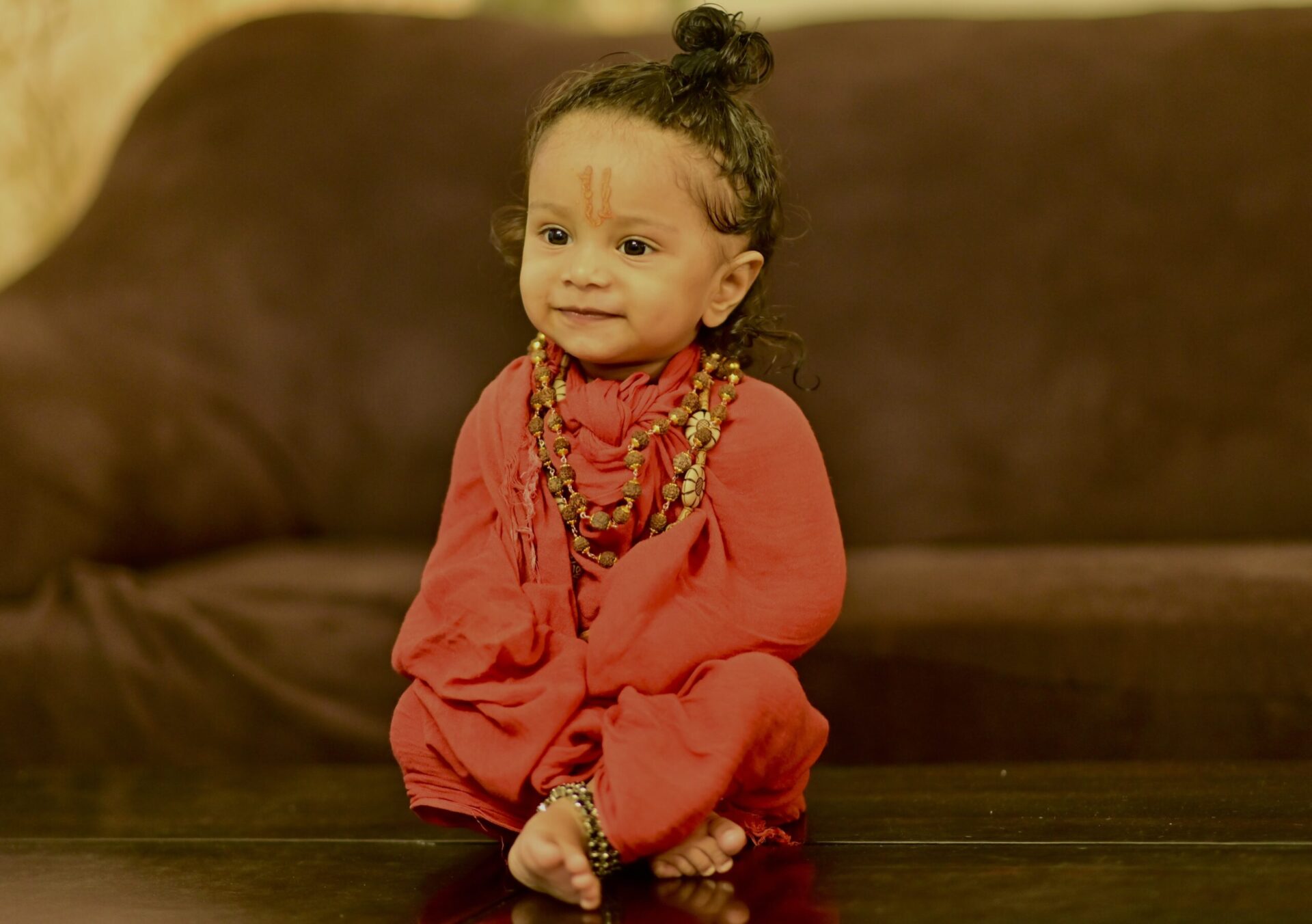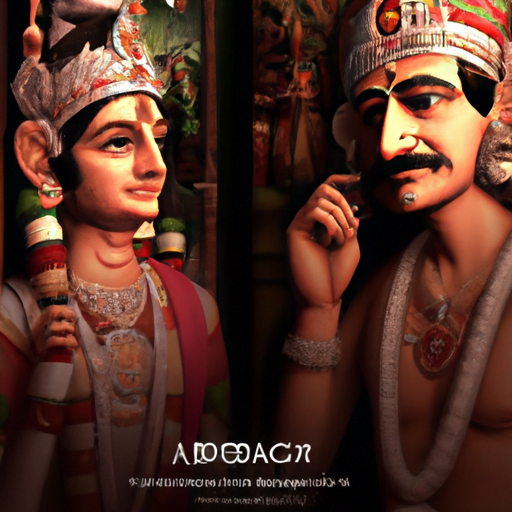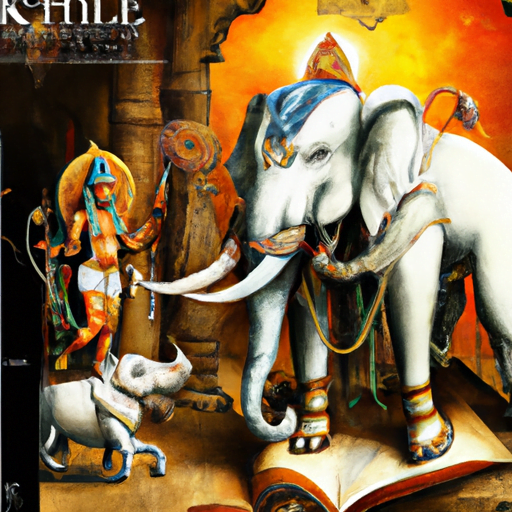Have you ever wondered about the origins of Hinduism? Curious about the religious beliefs that preceded it? Look no further! Introducing “What Was The Religion Before Hinduism?” This intriguing product offers a fascinating exploration into the religious practices that laid the groundwork for Hinduism as we know it today. Discover the ancient traditions, rituals, and deities that once held sway, and gain a deeper understanding of the rich tapestry of belief systems that have shaped our world. Don’t miss out on this enlightening journey through time!

Table of Contents
1. Prehistoric Religions
1.1 Paleolithic Religion
During the Paleolithic period, which began around 2.6 million years ago and lasted until around 10,000 BCE, early humans had not yet developed organized religions as we understand them today. However, it is believed that they held spiritual beliefs and engaged in various forms of ritual and worship. These early religious practices centered around the natural world and the forces of nature.
Early humans revered and worshipped natural phenomena such as the sun, moon, stars, and animals. They believed that these natural elements had spiritual significance and possessed powers beyond human understanding. Cave paintings found in various parts of the world provide evidence of their religious and artistic expressions. These cave paintings depict animals, hunting scenes, and what are believed to be symbolic representations of their spiritual beliefs.
1.2 Neolithic Religion
With the advent of agriculture and settled communities, the Neolithic period marked a significant shift in human civilization. During this time, which began around 10,000 BCE, early agricultural societies began to develop more complex religious ideologies. The transition from hunter-gatherer societies to agrarian communities brought about changes in religious practices, with a focus on fertility and the cultivation of crops.
Neolithic religions centered around the worship of deities associated with fertility, agriculture, and the natural cycles of life. These early agricultural societies believed in the existence of spirits and gods who controlled the growth of crops, the fertility of the land, and the success of their communities. Rituals and ceremonies were performed to appease these deities and ensure a bountiful harvest.
2. Indus Valley Civilization
2.1 Early Indus Valley Religion
The Indus Valley Civilization, which flourished from around 3300 BCE to 1300 BCE, was one of the earliest urban civilizations in the world. The religious beliefs and practices of this ancient civilization are not well understood due to the lack of deciphered texts or inscriptions. However, archaeological evidence provides insights into their religious practices.
Statues and seals found in the ancient cities of Harappa and Mohenjo Daro depict human figures in various postures, possibly indicating religious rituals and practices. These artifacts suggest a belief in some form of deity or divine power. Some scholars speculate that the Indus Valley people worshipped a mother goddess who represented fertility and nature.
2.2 Mature Indus Valley Religion
As the Indus Valley Civilization reached its peak, its religious practices became more complex. The discovery of large-scale public buildings, such as Great Bath, suggests the presence of communal religious rituals. The arrangement of these structures indicates careful planning and a focus on ceremonial activities.
The presence of seals with inscriptions and figures in yogic postures suggests a connection to spiritual and religious practices. The depictions of animals, like the mythical unicorn, may also indicate reverence for certain animals. However, due to the lack of decipherment of the Indus script, the precise nature of their religious beliefs and rituals remains a subject of ongoing study and speculation.
3. Vedic Religion
3.1 Early Vedic Period
The Vedic period, which began around 1500 BCE, marked a significant transition in religious practices in the Indian subcontinent. This period is characterized by the composition of the Vedas, a collection of ancient Sanskrit texts considered sacred by followers of Hinduism.
The early Vedic period was an era of Indo-Aryan migration into the Indian subcontinent. The religious beliefs during this time centered around gods known as Devas. Sacrifices and rituals were performed by priests called Brahmins to appease these Devas and ensure prosperity and well-being for the community.
3.2 Later Vedic Period
During the later Vedic period, which began around 900 BCE, the religious practices outlined in the Rigveda became more elaborate. The development of various Brahmanas, Aranyakas, and Upanishads further expanded the philosophical and spiritual aspects of Vedic religion.
The later Vedic period witnessed the emergence of new rituals and the classification of society into four varnas (castes): Brahmins (priests and scholars), Kshatriyas (warriors and rulers), Vaishyas (merchants and farmers), and Shudras (laborers and servants). The Upanishads, philosophical treatises, explored concepts such as the self, karma, and the nature of reality, setting the stage for the evolution of Hindu philosophy and spirituality.
4. Brahmanism
4.1 Emergence of Brahmanism
Brahmanism refers to the religious and social system that developed from the later Vedic period and laid the foundation for Hinduism. The Brahmanas, which were texts composed by priests, played a central role in the establishment of Brahmanism. These texts codified rituals, sacrifices, and social norms, emphasizing the importance of the Brahmin caste.
With the growing influence of Brahmins, a priestly class, religious rituals and sacrifices became more complex and exclusive. The authority and knowledge of the Brahmins were highly regarded, and they were seen as intermediaries between the gods and humans.
4.2 Rituals and Beliefs
Brahmanism emphasized the importance of performing rituals and sacrifices to maintain harmony and order in the world. Sacrifices, known as yajnas, were performed to appease the Devas and seek their blessings. The Brahmins played a crucial role in these rituals, chanting hymns, and ensuring the proper execution of the ceremonies.
The concept of dharma, which referred to the moral and ethical duties of individuals, was an integral part of Brahmanism. It emphasized the adherence to social and religious norms based on one’s caste and stage of life. The pursuit of moksha, liberation from the cycle of birth and death, was also an important aspect of Brahmanism.

5. Jainism
5.1 Origins of Jainism
Jainism, founded by Lord Mahavira in the 6th century BCE, emerged as a distinct religious and philosophical tradition in ancient India. Its origins can be traced back to the religious and social ferment of the time, with Jainism challenging the prevailing religious and social norms.
Lord Mahavira, who followed the path of spiritual asceticism, preached the pursuit of liberation through non-violence (ahimsa), truthfulness (satya), non-stealing (asteya), celibacy (brahmacharya), and non-attachment (aparigraha). Jainism emphasized the equality of all living beings and the importance of compassion and non-violence towards all forms of life.
5.2 Jain Teachings and Practices
Jain teachings revolve around three core concepts: right belief, right knowledge, and right conduct. The followers of Jainism strive to cultivate these qualities in their daily lives. Jainism advocates for a vegetarian lifestyle and the avoidance of violence towards any living being, promoting a deep sense of respect for all forms of life.
The practice of asceticism, undertaken by Jain monks and nuns, involves renunciation of worldly possessions and leading a life of strict self-discipline and simplicity. The pursuit of spiritual enlightenment and liberation from the cycle of birth and death is central to Jain philosophy.
6. Buddhism
6.1 Life of Gautama Buddha
Buddhism, founded by Gautama Buddha in the 5th century BCE, emerged as a new religious and philosophical movement in ancient India. Gautama Buddha, born as Siddhartha Gautama, was a prince who renounced his luxurious lifestyle in search of spiritual enlightenment.
After years of intense meditation and self-reflection, Siddhartha Gautama attained enlightenment and became known as the Buddha, meaning the “Awakened One.” The core teachings of Buddhism, commonly known as the Four Noble Truths, revolve around the nature of suffering and the cessation of suffering through the Eightfold Path.
6.2 Core Principles of Buddhism
Buddhism emphasizes the impermanence of life, the interconnectedness of all beings, and the alleviation of suffering. The Four Noble Truths, which form the foundation of Buddhist philosophy, highlight the existence of suffering, the causes of suffering (such as attachment and desire), the possibility of ending suffering, and the path to the cessation of suffering (through ethical conduct, meditation, and wisdom).
The Eightfold Path, the practical guide to achieving liberation from suffering, consists of right understanding, right intention, right speech, right action, right livelihood, right effort, right mindfulness, and right concentration. Meditative practices, such as mindfulness meditation, play a crucial role in the path to enlightenment.

7. Ajivika
7.1 Ajivika Beliefs and Philosophy
Ajivika, an ancient Indian philosophical and religious movement, emerged around the 5th century BCE. It was founded by Makkhali Gosala, a contemporary of Gautama Buddha. Ajivika’s philosophy focused on predetermined fate and the belief that every individual’s life was predetermined and governed by cosmic principles.
The Ajivikas believed in the concept of niyati, which refers to an individual’s destined path in life. They believed that everything, including human actions, occurred according to a predetermined cosmic order and that human beings had no free will. Ajivikas also believed in the cycle of birth and death, emphasizing the idea that life was a continuous process of reincarnation.
7.2 Influence and Decline
While the Ajivika religious and philosophical movement was influential during its time, it eventually declined and disappeared from mainstream Indian society by the 14th century CE. Despite its decline, the Ajivika movement had a significant impact on the religious and philosophical landscape of ancient India.
Ajivikas provided an alternative perspective on the nature of existence, destiny, and the cyclical nature of life. Their emphasis on predetermined fate challenged the prevailing beliefs of free will and individual agency. However, with the rise of other religious and philosophical traditions, such as Hinduism and Buddhism, the popularity of Ajivika declined over time.
8. Shaivism
8.1 Origins of Shaivism
Shaivism, one of the major sects of Hinduism, centers around the worship of Lord Shiva as the supreme deity. The origins of Shaivism can be traced back to ancient texts such as the Vedas and the Upanishads. However, it was during the medieval period that Shaivism became more prominent and developed various sectarian traditions.
Shaivism gained popularity in various regions of the Indian subcontinent, and temples dedicated to Lord Shiva became important centers of worship. The Nayanars, a group of Tamil poet-saints, played a significant role in popularizing Shaivism through their devotional hymns and religious fervor.
8.2 Shaiva Sects and Practices
Shaivism encompasses various sects and sub-traditions, each with its own distinct practices and beliefs. Some prominent Shaiva sects include the Pashupatas, the Shaiva Siddhanta, and the Kashmir Shaivism. These sects differ in their philosophical interpretations, ritual practices, and the organization of their religious institutions.
Shaivism places great importance on the worship of Lord Shiva, both in his formless (nirguna) and manifested (saguna) aspects. Devotees engage in rituals, such as the linga worship and the recitation of hymns and mantras, to express their devotion and seek blessings from Lord Shiva. The philosophy of Shaivism encompasses concepts like monism (the belief in the ultimate oneness of the universe) and the union of the individual soul (Atman) with the divine (Brahman).

9. Vaishnavism
9.1 Evolution of Vaishnavism
Vaishnavism, another major sect of Hinduism, centers around the worship of Lord Vishnu and his various incarnations, such as Lord Rama and Lord Krishna. The origins of Vaishnavism can be traced back to the Vedas and the Upanishads, which mention the importance of Lord Vishnu.
With the emergence of the Bhakti movement in medieval India, Vaishnavism gained widespread popularity as a devotional sect. Bhakti poets like Jayadeva, Surdas, and Tulsidas played a significant role in spreading the teachings of Vaishnavism through their devotional compositions.
9.2 Vaishnava Theology and Worship
Vaishnavism encompasses a rich theological framework that emphasizes devotion (bhakti) as the means to attain spiritual liberation. The devotees of Lord Vishnu engage in various devotional practices, including the recitation of hymns, the singing of songs, and the performance of rituals.
The worship of Lord Vishnu includes the installation and adoration of deity forms, such as idols or paintings, in temples and home shrines. Vaishnavas also celebrate festivals dedicated to Lord Vishnu and his avatars, such as the Rama Navami and Krishna Janmashtami.
11. Conclusion
The religious landscape of ancient India was diverse and vibrant, with a wide array of religious and philosophical traditions coexisting and shaping the beliefs and practices of the people. From the prehistoric religions of the Paleolithic and Neolithic periods to the emergence of complex Vedic rituals and the founding of major religious movements like Jainism, Buddhism, and the various sects within Hinduism, the spiritual heritage of ancient India has left a lasting impact on the world.
Each religious tradition brought its own unique insights and teachings, providing individuals with different paths to spiritual enlightenment, the understanding of the self, and the discovery of the ultimate reality. Through rituals, beliefs, and philosophical doctrines, these ancient religions addressed fundamental questions about the meaning of life, the nature of existence, and the pursuit of salvation.
As we explore the religious traditions that preceded Hinduism, we gain a deeper understanding of the rich tapestry of beliefs and practices that have shaped human civilization. While these ancient religions may have evolved and transformed over time, their legacy continues to influence the religious and philosophical landscape of India and the world today.

You might be interested in exploring the religious practices that preceded Hinduism. Speaking of ancient religions, you might be interested in Jainism, which emphasizes non-violence and compassion towards all living beings. Another fascinating ancient religion is Zoroastrianism, which originated in ancient Persia and emphasizes the battle between good and evil. Additionally, you might find Vedic religion intriguing, as it was an early precursor to Hinduism and involved